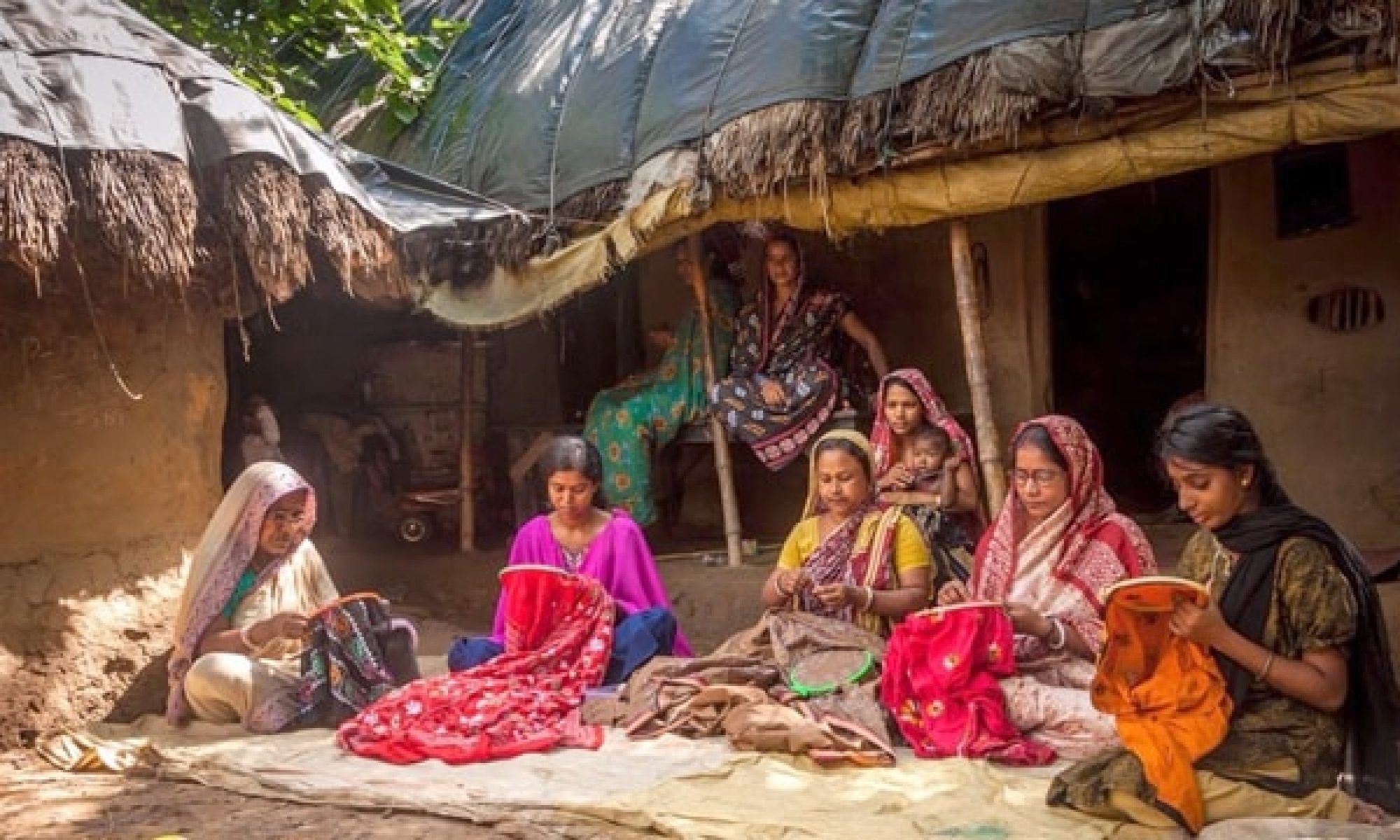Unit Two: Submission
How can we Develop a Bridge between Indian Artisans & Fashion / Film Industry to work globally with or without intermediaries?
Introduction:
In the informal sector of India, handicrafts secure a significant role in the economy so to generate employment for the vulnerably scattered population. (Jena 2010; Chakraborty 2013).
The handicrafts sector has undoubtedly immense potential in generating opportunities & wages for many artisans.
For India, the increased demand for handicrafts in both the national and international markets have not led to a corresponding rise in benefits to individual craftworkers also conclude that despite higher-than-expected earnings in Asia from craft production, the returns to labor are extremely low, resulting in at least partially in an insufficient number of young people entering the craft sector.
(Cable et al 1986:108; Taimni 1987:24), Kathuria et al (1988: v)
This gap between opportunities and returns has resulted in artisans joining this work out of those, few of them have left this field due to this disparity. This research would be helpful in building networks and connecting these artisans with professionals.
Research Methodology:
This research is QUALITATIVE, this method investigates the why and how of decision-making, not just what, where, when.
Qualitative research is a behavioral research method that relies on non-numerical data derived from observations and recordings that approximate and characterize phenomena.
Denzin NK, Lincoln YS (eds.). Handbook of Qualitative Research. London: Sage Publications, 2000.
Primary Research: Qualitative Data Collection Tools used are:
- Online Forums / Web survey Chats
- Online communities
- In-depth interviews
- Ethnographic research
Secondary Research: has been done referring to online articles, papers, various books, and video content.
Intervention: Below is the interventions those has been done:
- Listing of Styles / Designs under e-commerce marketplace: This intervention will provide the first exposure to the Artisans, interacting with this world and understanding the demand.
https://dioramadesigns.in/ (Working in close association with ethical intermediary Ms. Disha Sahu).
- A photoshoot has been done with the first set of designs.
- Proposal sent to designers for incorporating styles by artisans in their upcoming photoshoots / Films: This proposal has been discussed with a few designers to consider a few artisans for the creation / development of the designs.
- Contacting various artisans directly to put them under the contact list.
- Handmade designs have been sent via courier to London, for my creative practice and interaction with people.
Audience: Detailed Interviews
- Artisans
- Ethical intermediaries:
- Fashion / Film Professionals:
Research Strengths
Strong Network: This research would help in the foundation of a strong network that would directly connect the deserving Artisans with the professionals from the film/fashion Industry.
Interview by: Mr. Divyak D’souza
Authenticity: Authenticity is the major feature of this bridge as all the Artisans & Professionals are able to connect/register after proper documentation and authentication process.
Trust: This bridge would promise trust to the artisans in terms of fair labor wages, connecting them with real professionals with or without registered intermediaries.
Value: As an initiative to connect Artisans with the professionals, the Artisans should be able to deliver the expected value in terms of quality designs, unique creation through this bridge. Fashion brands/films are focusing more on creativity, uniqueness, and quality.
Awareness: Working directly with the Artisans requires the development of strong programs like training, awareness, and education to enlighten the mindset of the artisans through this channel of exposure.
Empowerment: Preparing artisans for the film/fashion world would not only help them in terms of wages, rights & schemes but it will help in the eradication of corruption in the process. Empowering them in terms of their IPR is especially important.
Interview: Mr. Nikhil Prabhakar
Weaknesses/gaps
Lack of participation: Few regions in India endowed with rich original traditional art, are not willing to move and participate. This will impede the learning and exposure they might gain through participation.
Resistance towards handicrafts: After interviewing a few emerging artisans and young people who are not willing or want to change their art forte. This thought is limiting them to the road, which can easily help them earn daily wages in return.
There is resistance amongst the young to handicrafts not only because of the poor financial return but also because handicrafts are seen as for the ‘old, uneducated and rural.
Interview : Ms. Swati Srivastava
Rigid Belief system: The few artisans with strong artisanship are very rigid and not willing to adapt to the new requirement from the fashion industry. They do not want to uplift the actual process (not art), like a change in weave pattern for any sample fabric as per requirement by some designer.
Fast Fashion: Few budding designers are working fast-paced and are less interested in training new artisans to save their efforts and time. They want to continue with their in-house labors rather than investing in new talents.
Observation:
Technology: With increasing internet penetration in the rural parts of the country, there is a terrific opportunity to digitally promote Indian crafts.
Lack of Proper Wages
Comfortable ecosystem: the comfort factor for an artisan lies in working with people who can understand their problems better and not force them to bring about drastic changes in their working ecosystem.
Preservation of culture: This bridge will be able to connect the cultural differences between the new & old generations.
Concluding:
The global handicrafts market reached a value of US$ 718 Billion in 2020, the market to grow at a CAGR of around 10% during 2021-2026. India contributing hardly 2% to it even after sheltering 40% of the global artisan workforce. This huge disparity shows the gap that lies for handicraft products in reaching out to the global audience.
My efforts to study the factors that are the cause of this gap would help to suggest countless ways to overcome this problem in the future. There is an absence of proper infrastructure and distribution channels for these artisans to market their products in the market.

